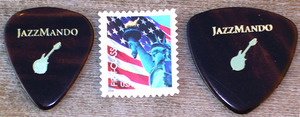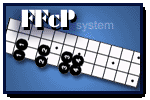« April 2011 |
Main
| June 2011 »
 May 26, 2011 | Best of JM: Inner Game of Tennis
May 26, 2011 | Best of JM: Inner Game of Tennis
Enjoy the popular archive material below.
From January 16, 2007: "Inner Game of Tennis"
Physical Education intersects tremendously with the world of music pedagogy. The science of athletics can uncover commonalities between the pursuit of excellence in sports and learning to play a musical instrument. After all, both are about the effective connection of mind and body, and ultimately, the aesthetic and spiritual enjoyment of muscles and brain firing efficiently on all cylinders.
In the 70's, the book "The Inner Game of Tennis" by W. Timothy Gallwey (revised 1997) blazed trails in defining a whole new way of sports enthusiasts bettering their game, and it wasn't limited to tennis players. "Sports Psychology" was virtually virgin terrain in popular sports culture and education. Gallwey helped rewrite the handbook of effective personal sports training.
We recently read this book and couldn't help but glean important concepts in understanding mandolin playing and practice techniques. It's a simple notion that our brain short-circuits when we become overly analytical about the details of playing. Hold the wrist loose, don't grip the pick too hard, follow through in a rest-stroke from down-stroke to the next string down, watch the pick angle, keep the pinky from flying--all the particulars within these collective instructions can inhibit us in performing rather than helping if our "Inner Game" is not collected. It worsens exponentially in the pressures of tournament or public performance when we get hyper-critical and self-effacing.
The book goes into much detail, and we exhort you to read it. At over 7 million copies sold worldwide, your local public library probably has a copy, but you may wish to own one yourself. Meantime, we'll elaborate on three concepts we've gleaned.
- A valid instruction derived from another's experience can help me only if it guides me to my own experiential self-discovery. Instructions or tips from other players sand teachers will help, but only if your mind is able to translate into your experience. These should be guidelines, not commands. If you're told "grip the pick so it doesn't slip out of your hands," that still doesn't tell you how much pressure you ultimately exert. Since it WILL be different for each individual player, you need to take the nugget of suggestion and explore your own boundaries of pick pressure. It's about self-enlightenment, not someone pouring their answers into your own personal vat full of behavior.
- A child doesn't dig his way out of old grooves. He starts new ones. Our experience teaching dogs and children has always been more effective telling what TO DO more than what NOT to do. "Don't let the notes die in your fretting finger between string crossings." This is much more effectively expressed "Connect the last note from one string to the first note of the next string." It's a forward motion approach. Or saying "don't tense up," usually makes you even tenser; it's better to say "Relax!" We respond so much better than commands than barriers.
- Natural focus occurs when the mind is interested. Focus is not about thinking hard about something. Ever have a truly difficult passage you just couldn't concentrate on and play, even when you slowed down to snail speed? Maybe this passage is not tripping your synapses because you have nothing to hang it on. Your brain is not "interested." Take some moments for a little intellectual musical analysis. Is a chord arpeggio spelled out? A scale? What is the implied harmonic progression and is it more complex than the chords the rest of the ensemble is playing? Which are chord tones and which are passing notes? These are the questions that make your brain "dig;" ultimately what will make your fingers respond (and learn) after drilling.
There is much more you can learn from a Tennis Pro. Check out the rest of "The Inner Game of Tennis" for yourself!

Posted by Ted at 6:20 AM
 May 19, 2011 | Best of JM: Top Picks
May 19, 2011 | Best of JM: Top Picks
The weekly "Tips and Tricks" column will be on a temporary indefinite hiatus while we finish up a book project. Meantime, enjoy the popular archive material below.
From January 24, 2008: "Top Picks"
Picks are one of the least expensive ways you can change your sound. Every note you play starts with the pick, and your efforts to develop your own sound will always be contingent on its control and just how much you are "one with the pick."
If we were to recommend one pick (why, the JazzMando pick, of course!) we'd be as disingenuous as a shoe store clerk recommending everyone buy a size 7 wide Urban Moccasin in red suede (personal fave here at the JazzMando campus). Ridiculous to be so narrow because just like not everyone's feet are the same, neither are their hands, let along playing contexts. (Those Urban Moccasins aren't so cool at a Governor's Inauguration; speaking from experience.)
Let's articulate generalities, and yes, there will be exceptions to these, so take them with a grain of salt. The majority of mandolinists gravitate toward larger (1.5 mm and up), rounder picks (Fender 346) than guitarists. The Fender 351 shape is by far the most popular shape, but ironically, to get more sound out of our smaller instrument, we seem to need thicker and bigger to pull tone out of the double courses. Of course those more dependent on a fluid tremolo might prefer something thinner (Evan Marshall, Marilyn Mair, Don Stiernberg for example), but we'll leave it to you to experiment on what works best for your style of music.
Five areas of pick make-up for you to consider, and as we list them, we'll use a few nonsensical syllables to get the point across on how they affect tone. You'll probably come up with a few ideas yourself, and that's fine; it's all part of the exploration.
Mass (rigidity) Poh vs Doh
A flexible pick is great for the single courses of a guitar but mandolin really does better with something more rigid. Now pick flexibility CAN be good for tremolo, but there's something to be said for the control found in a stiff pick. You can probably accomplish better articulation if the suppleness is in your wrist rather than your pick. Stiffness yields "Doh" instead of "Poh."
Size (thickness) Dee vs Tee
Along the same lines (almost inseparable) as mass is pick thickness. A thicker pick creates volume with less stress on the hand and wrist. Guitar players struggle with this notion, but the majority who switch to mandolin find a hefty pick is actually less work than a weak, wimpy one. Like using a heavier bowling ball to knock more pins over, once you get a basic degree of control down, the pick works for you. Heavy yields a round "Dee" instead of a tepid, front-loaded "Tee."
Bevel (edge) (Szee vs Tzee)
You'll only notice these in a pick that's bigger than 1.14 mm, but if the pick has a more rounded bevel, you get more of the string fundamental, rather than the "snap" of articulation. Some pick hand-crafters spend a lot of time making these, as machining to produce these is not particularly effective. That means the price will be significantly higher, but don't underestimate the power of a polished pick bevel, which yields "Szee" over "Tzee," especially in a succession of rapid notes.
Point (contact surface) Dih vs Kih
Pointy picks or round tip? The rounded shoulders of an isosceles Fender 351 triangle are used by many a player, but why have two corners to wear when you can have three? The extra mass of a larger rounded (346) triangle can be useful for bigger sound, too. Some like a real pointy tip to the pick, arguably a much more one-dimensional sound, and one which we'd struggle to be fond of. More corner surface also yields more string fundamental, which means more string, less pick snap in your sound. Think "Dih" instead of "Kih."
Construction (material) Dee vs Dah vs Doh
Celluloid, Acetate, Delrin, Acrylic, bone, horn, tortoise, tin, there are a ton of materials out there to make a pick, and each of these will affect tone, playability, mass, rigidity, you name it. These are going to be as personal as what flavor ice cream you get for your next Baskin-Robbins trip. We won't give any recommendations here except to say you can alter stiffness and mass by using any variation of pick materials. We happen to like the middle-of-the-road Acetate picks of the D'andrea Pro-plec line because of the balance of weight and stiffness, and the ability to produce a hefty pick thin enough to still have a healthy bevel (1.5 mm).
Other variations, cat tongue grip, holes for lightness and/or grab, fin picks (we don't know what the heck good these do) are all out there, and we'd never discourage experimentation. You still want to find a pick to settle in to so you can achieve some degree of consistency in your pick control.

Posted by Ted at 1:19 PM
 May 12, 2011 | Best of JM: Intentional Improvisation
May 12, 2011 | Best of JM: Intentional Improvisation
The weekly "Tips and Tricks" column will be on a temporary indefinite hiatus while we finish up a book project. Meantime, enjoy the popular archive material below.
From April 23, 2009: "Intentional Improvisation"
We've reflected recently on multi-Grammy winner Quincy Jones' notion of the "balance of science and soul," in the context of " The blur between intent and mistake," and the slightly tangential topic of instrument construction in the work of Physicist, "Dr. David Cohen. Two conflicting schools of thought on creativity pit each other. One says it's all science and numbers, manipulating known rules and concrete observations, the other says imagination just kind of spontaneously happens. We're sure you'll find most musicians agree the best kind of improvisation happens somewhere in between these worlds. The real question is how much is intentional and cognitive, how much is spontaneously inspired.
 Hearing jazz mandolin mentor Don Stiernberg address this at a workshop, a participant insisted, "Admit it, some people like you just have it; the rest of us don't." His reply was that it's true it may well come easier for some, but that doesn't mean the others can't develop tricks that get them down the path of intentional improvisation. We want to review a few of these "tricks" and agree with Don that not everyone will approach this the same way. Some do all the construction seamlessly intuitively, the rare musician simply going by what sounds good and forsaking the "vocabulary" of theory. The rest of us take these theory nuggets and build improvisation off them. Hearing jazz mandolin mentor Don Stiernberg address this at a workshop, a participant insisted, "Admit it, some people like you just have it; the rest of us don't." His reply was that it's true it may well come easier for some, but that doesn't mean the others can't develop tricks that get them down the path of intentional improvisation. We want to review a few of these "tricks" and agree with Don that not everyone will approach this the same way. Some do all the construction seamlessly intuitively, the rare musician simply going by what sounds good and forsaking the "vocabulary" of theory. The rest of us take these theory nuggets and build improvisation off them.
Scales, Modes, Scale Patterns. These are great for getting a fretboard grip on the proper ingredients to a solo. What is missing is communicating the more important notes of the scale, the chord tones, the gravity notes. Still, you need these if nothing else to deliver the connecting tissue, the proper passing tones between the harmonic (chord) structure.
Arpeggios. The spelling out of chords linearly addresses the aforementioned harmonic structure. Equpping yourself with an arsenal of these patterns gives you something to build off of, but again, you also want to be able to connect them.
The Axis of the 3rds and 7ths. Similar to the arpeggio, this injects an additional linear drive to your music. The power of the (7th) leading tone, the aesthetic propulsion of the 4th to the 3rd is energy that makes your soloing dance. It's another arrow in your cerebral quiver.
Chromatic Passing Tones. This will be far more intuitive, but playing notes "outside" the chord as a draw back to the chord is another way to "freshen" your melody. Word of warning, overused these will also tell your audience you are lost. Use these judiciously.
Where are you with your "Muse" and your brain? In the long run it doesn't matter! However, don't be afraid to try these different techniques to your soloing. Your improvisation will mature; you and your audience will enjoy your playing more.
Further:
" Don Stiernberg: Axis of the 3rds & 7ths
" More Appropriate
" Major 7th Arpeggios
" Improvisation Techniques
" Lydian Tracks Pt. 1: A Path to Modal Improvising
" Lydian Tracks Pt. 2: A Path to Modal Improvising
Posted by Ted at 1:10 PM
 May 5, 2011 | Best of JM: Augmented 11th FFcP
May 5, 2011 | Best of JM: Augmented 11th FFcP
The weekly "Tips and Tricks" column will be on a temporary indefinite hiatus while we finish up a book project. Meantime, enjoy the popular archive material below.
From Jan 13 2010: "Augmented 11th FFcP"

Augmented 11th FFcP
Of course, we are big on the Major Scale. Most of our FFcP entries have focused around this, with the exception of some recent entries in Pentatonic and Dorian/Minor. We do want to take you into what we consider the 2nd most important scale or sequence of notes, one we've labeled the Augmented 11th Scale. We've written several articles in our Mandolin Sessions duties at Mel Bay, but for here, we'll just mention it can be called a Lydian Dominant, Lydian b7 or a Mixolydian #4. You can also envision it as a Major Scale with a raised 4th and a flatted 7th. Whatever works for you, but the purpose of this FFcP is you introduce you to the physical side of the sequence of notes.

The FFcP exercise is an extended version of one introduced in the December 2009 Mandolin Session, and you can read more about it here: Something Old. Something New. What we've done is apply it to the other three fingerings, extending it from just the 1st FFcP below:

You'll do well to take this to the next level and apply it to all 12 keys and move it around the fretboard. Its application as improvisational fodder for improvisation on dominant functioning chords will become obvious to you, especially as it becomes intuitive. Keep in mind the note relationships are the same as what you will find in an Altered Scale and an ascending Melodic Minor Scale.
G Augmented 11th: G, A, B, C#, D, E, F G
C# Altered Scale: C#, D, E, F, G, A, B, C#
D Melodic Minor: D, E, F, G, A, B, C#, D
There's some pretty potent opportunities in this pattern of notes!
Enjoy 2 page PDF: Aug11thExercises.pdf
More FFcP: FFcP Studies
Posted by Ted at 8:11 AM

Disclaimer: In the 'Information Age' of the 21st Century,
any fool with a computer, a modem, and an idea can
become a self-professed 'expert." This site does not
come equipped with 'discernment.'
|



